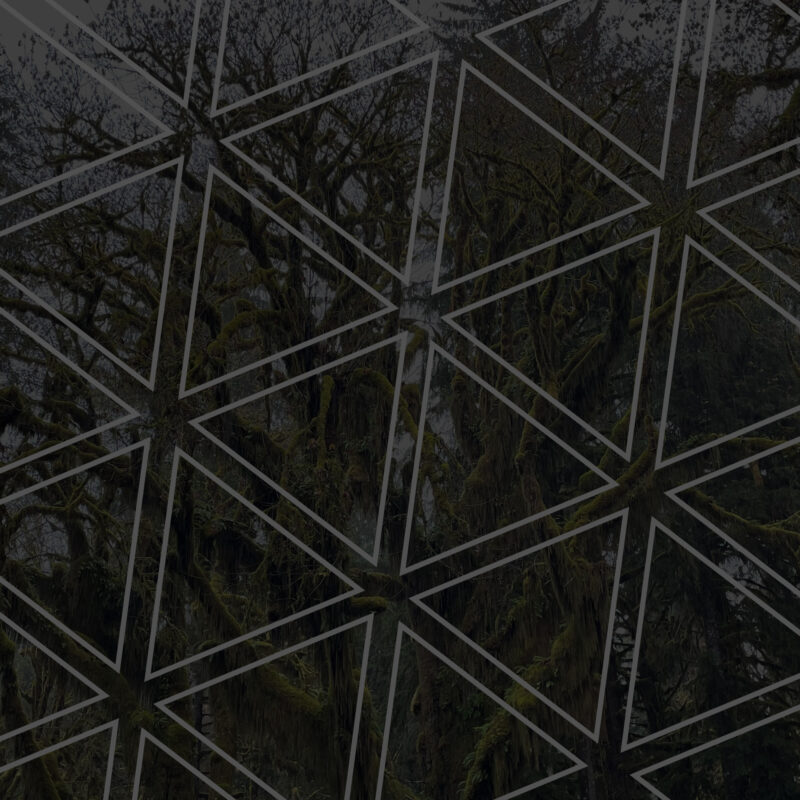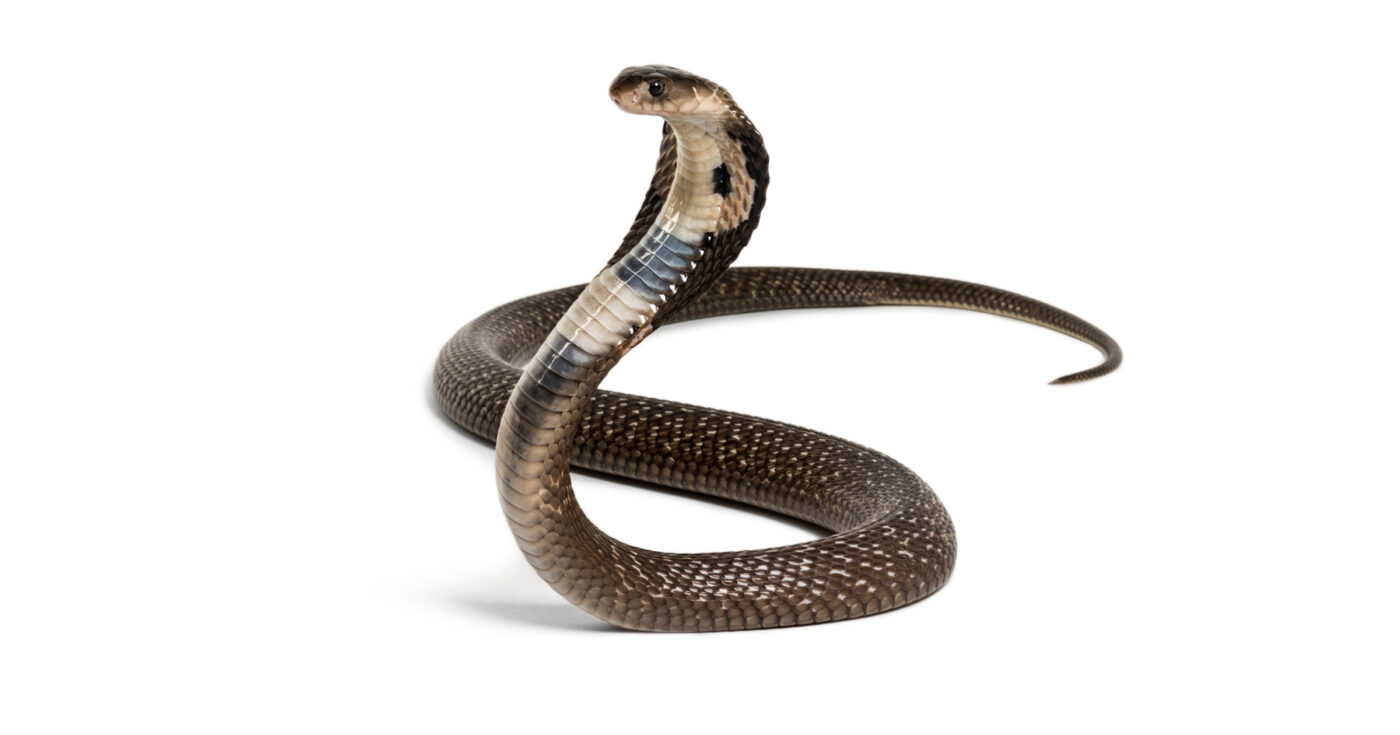King cobra, Ophiophagus hannah, venomous snake against white, Adobe Stock, by Eric Isselée

Very Important Predators
by Billy Timms
The King Cobra
Ophiophagus hannah
King cobras are the apex predators of their world. They are opportunistic hunters who primarily prey on other snakes but will feed on reptiles, small animals, and even other King Cobras. These lethal cannibals haven’t developed immunity to their own venom and have been known to kill and eat one another.
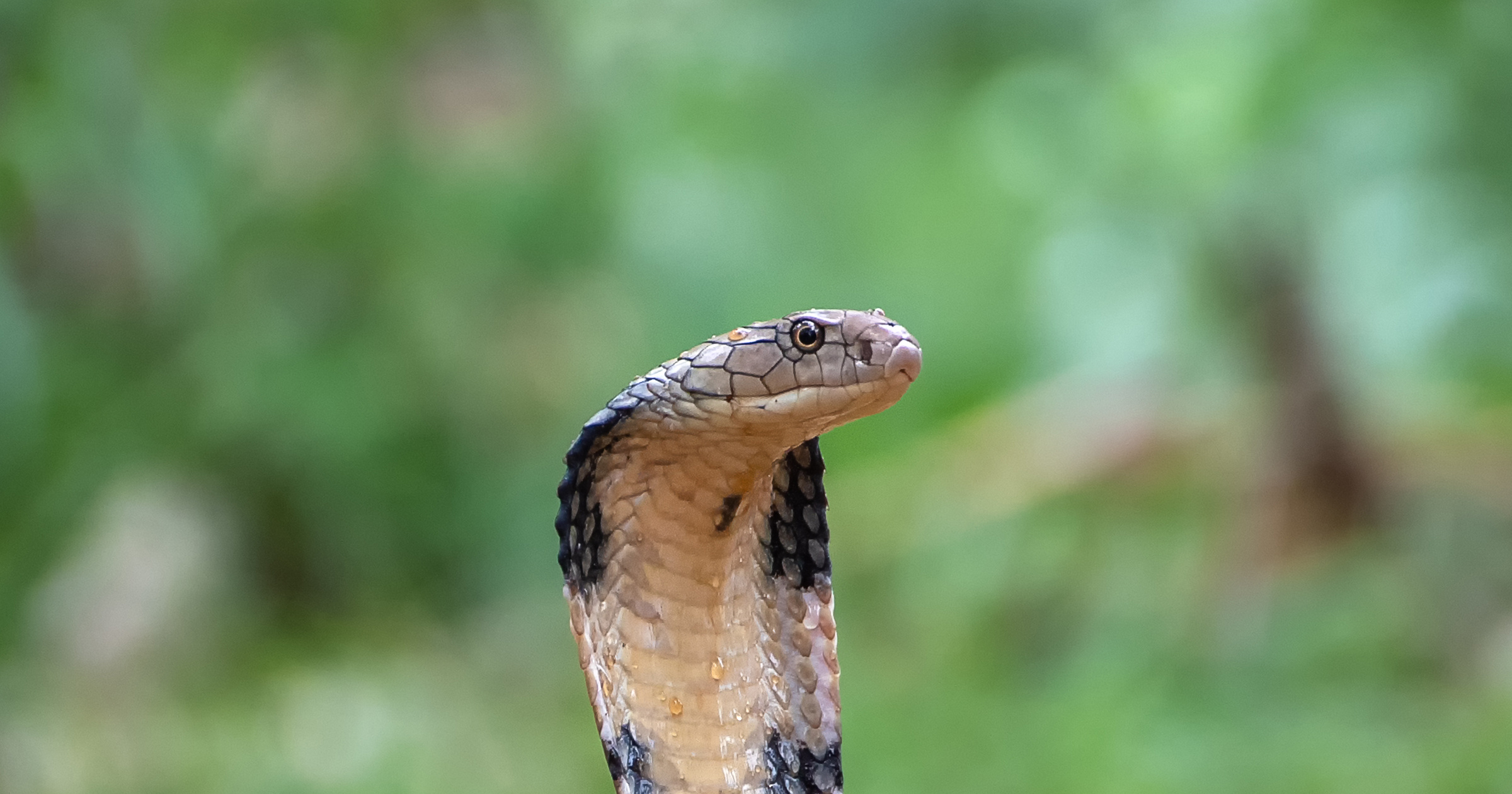
The king cobra (Ophiophagus hannah), Adobe Stock, by DS Light Photography
These very important predators can detect prey from hundreds of feet away by sensing scents with their flickering tongues and feeling vibrations from the earth. From a stationary position, they can stand up to three or four feet tall and strike at long range, delivering multiple bites in a single attack. Their potent venom contains neurotoxins that attack their prey’s nervous system, causing paralysis.
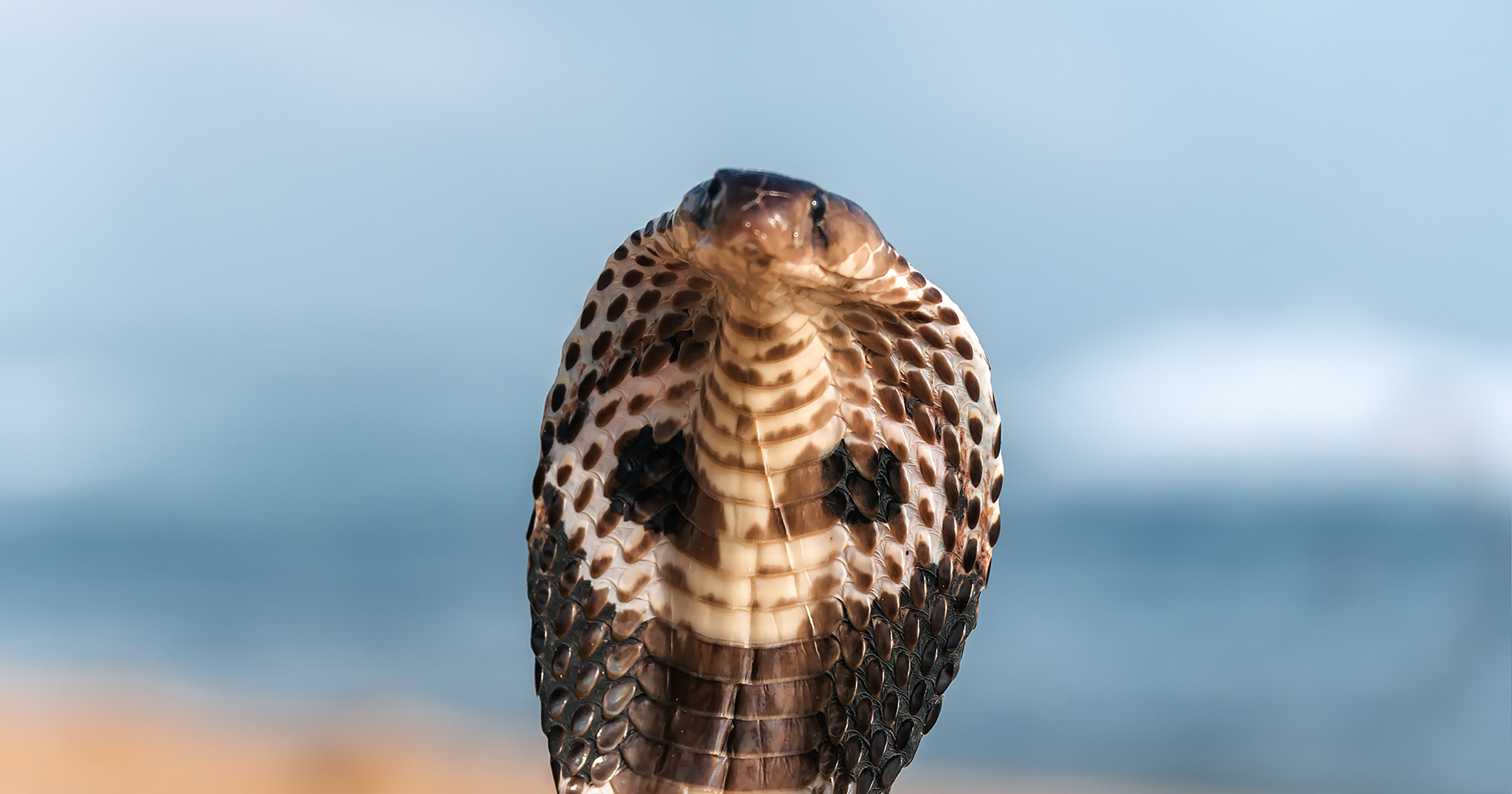
Live poisonous King Cobra, Adobe Stock, by Volodymyr Shevchuk
While king cobras typically avoid humans unless defending themselves or their eggs, they can deliver enough venom in one bite to take down an elephant!
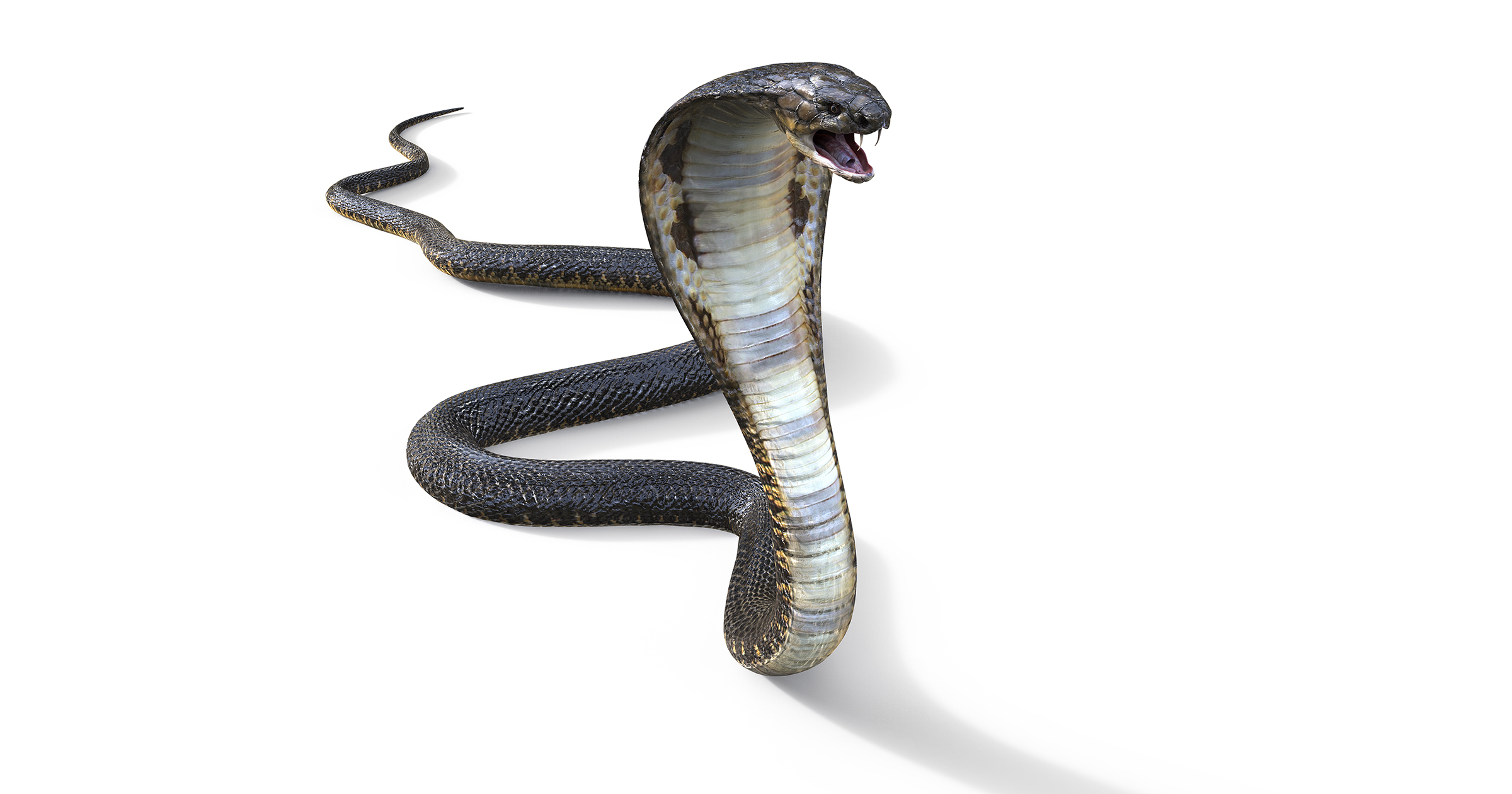
King Cobra The World’s Longest Venomous Snake, Adobe Stock, by mrjo_7
The king cobra is a very important predator that is crucial to the balance of its natural habitat. It controls the population of poisonous snakes that are aggressive to humans as well as other small vertebrates.
Kings are a vulnerable species threatened by loss of habitat, capture for use as pets, and harvesting for their skin, meat, or venom. It is protected in China, India, the Philippines, and Vietnam, with imports outlawed in numerous countries.
Beyond the predator and the prey.
– – –

NatAtEnvo was formed by BioTriad Environmental, Inc. to provide entertaining and informative media while keeping the wonders of nature in the public eye.

Our world is their hunting ground. Our back yards are their killing fields. They are the masters of land, sea, and sky, the balancers of ecosystems, and the most important predators on earth.
